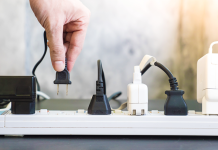Painting your home can be time-consuming and resource-draining. However, there is nothing that keeps your home spaces bright and festive, like a fresh coat of paint on your walls. But wait, before you rush into painting your home, you must know about other aspects to have a great experience. Recall that painting is a costly affair that will need to take place only when it is necessary.
It is normal for new homeowners to continue pondering when they should improve their homes’ hues with fresh paint. That notion makes sense; paint is a critical part of the interior and makes a world of difference in many ways.
Here is a comprehensive analysis of factors that will determine how often you will paint your house. Click here if you want your house exterior to be taken care of by professional painters.
Residential Painting Basics
The type and quality of paint you used in your previous painting process will determine the duration before the next painting event. Generally, low-quality paint will fade away fast. This simple aspect is essential to pay attention to overall.
It makes it a necessity to apply a brand-new high-quality coat. Still, always know that everything comes at a cost. Poorly done paint coatings will require a redo more often than thick-high-quality coats.
These are simple residential painting basics to keep in mind as you go about your residential painting process.
The Weather Conditions and General Climate Matter
Did you know that your neighborhood’s weather conditions will dictate how frequently you will go to acquire a new gallon of paint? Places with strong sunlight, oceanic breezes, extreme humidity, and blowing sands could destroy your paint coating at a quicker rate.
The harsher the conditions, the higher the frequency of paint revisions. Recall that replacement may take place yearly or after 2 years in these harsher situations.
Is it the Interior or the Exterior?
The position of the paint will play a crucial role in determining its lifecycle. Your exterior paint will usually last longer than that of your house’s interior. A standard quality paint should take at least five years to degrade (for the interior) and a longer time for the exterior.
However, your exterior might wear off faster if you reside in high salinity areas like the seaside. High rainfall areas also call for frequent replacement of the exterior paint. In essence, paint protects the house from mildew and mold attacks.
The Type of Plastering Used
Always know that the previous painting did not take place in a vacuum. There is a coating that holds the paint.
Therefore, your paint’s durability will significantly rely on the quality of plastering that you used underneath. Generally, smoother plastering will result in long-lasting paint and lower replacement frequency.
The Type of Family or Inhabitants within the Home
Yes, your family will determine the life of your painting. Families with a higher number of children are likely to replace their wall paint more frequently than adult-only families. In essence, kids will write on the walls, make scratches and dribbles. This makes the walls dirty, making it necessary to replace the painting as soon as you can.
The Portion of the House
Low traffic areas will not require frequent repaint events. But the high-traffic ones will usually require more regular paint jobs. Think about your kitchen and your bedroom. The kitchen is everybody’s place. It will be prone to scratches, spills, and frequent abrasions.
On the other hand, moist areas like bathrooms may be victims of faded paints. This reveals how often paint in these areas of the house will need to be repainted. Conversely, you’ll spend only a few hours in your bedroom. This explains why it will take a long while to replace the paint in this space.
You will notice that you will have various factors that contribute to painting frequency, as such, you can adjust your painting schedule accordingly.




